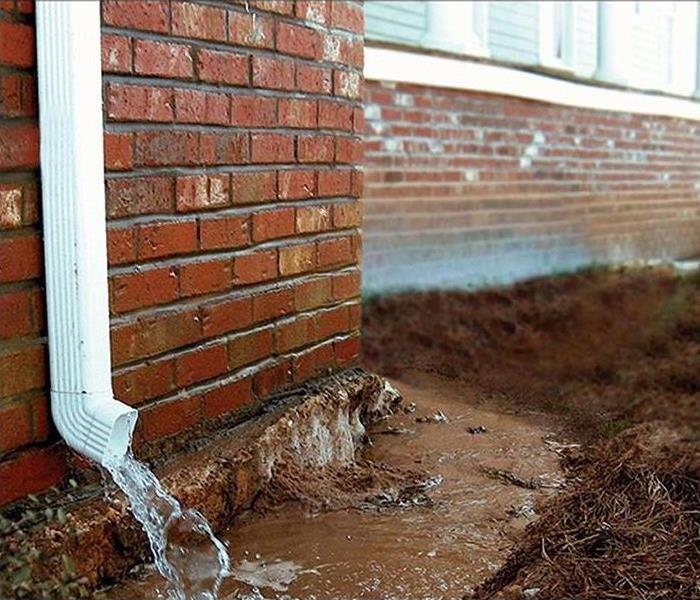Keep Water Out of Your Basement
9/16/2020 (Permalink)
 Regular maintenance, repairs and smart planting can help prevent water from entering and damaging your basement.
Regular maintenance, repairs and smart planting can help prevent water from entering and damaging your basement.
You can live in your home for a decade or more, and never experience water damage in your basement, but that is no guarantee that it will never happen. Sometimes water enters a basement through condensation or seepage, but sometimes it enters in a gush after a heavy rainstorm or snow melt. The fact is, 98% of basements in the U.S. will be damaged by water.
The most obvious sign of water in your basement is a pool of water on the floor. Water can enter your basement from a leaking roof or through poor drainage outside your home. If you notice water accumulating after a storm, that’s a good indication that water is entering from outside the home.
Regardless of how it gets in, water in your basement can result in ruined carpeting, drywall and framing. It can even buckle flooring above the basement and lead to a stubborn mold infestation. Stains, discoloration, warping, sagging, peeling or bubbling of your walls, floors or ceiling are signs that you have water damage.
What to Do Outside Your Home
For every inch of rain that falls, a 1,500-SF roof sheds 1,000 gallons of water. Your goal is to keep that water outside of your home and basement.
It starts with the grading of your yard. Soil should slope away from your foundation for at least 4 feet, at the rate of 1 inch per foot. If your grading does not meet this standard, add soil to the perimeter of the house and rake it smooth.
If you suspect your property has a high water table, call a professional in to evaluate the situation and determine solutions.
Evaluate your lawn and plantings. Any type of flowers or shrubs close to your foundation can attract water, increasing the chances that water seeps into your basement. Keep small plants at least 12 to 18 inches from your foundation. Planting grass next to your foundation, on the other hand, is beneficial.
Trees should not be too close to your home, as the roots can damage the foundation, leaving cracks that provide a path for water to enter. Plant trees at least 10 or even 20 feet from your house.
Clogged roof gutters are a guaranteed way to encourage water to leak into your home’s foundation, so clean them out regularly. Add 4-foot or longer extensions to your downspouts and have them empty onto splash blocks to guide water away from your foundation.
What to Do Inside Your Home
There are a few tasks you can do to prevent greater damage if you do get some water in your basement:
- Regularly test and maintain your sump pump, if you have one.
- Patch cracks in walls and waterproof the walls to seal them.
- Prevent condensation by running a dehumidifier.
When you have suffered a water or other disaster at your home or business, call SERVPRO of Bloomfield/Enfield at 860-216-2785
We're Here For You
The team at SERVPRO of Bloomfield/Enfield has the people, skills and equipment to help homeowners recover from water damage and eradicate mold. Call SERVPRO of Bloomfield/Enfield at 860-216-2785 any time.
Other Helpful Blog Posts
SERVPRO publishes educational articles on how to protect your home and business from disasters and how to deal with mold, fire, water, sewage, storm and other damage.
SERVPRO of Bloomfield/Enfield
Top 50 Franchise Nationally
100 Peters Road, Bloomfield, CT 06002
IICRC Certified
Noemi Garcia
Certified SERVPRO technicians
Call 860.216.2785
24-hour emergency service
When you have suffered a water or other disaster at your home or business, call SERVPRO of Bloomfield/Enfield at 860-216-2785






 24/7 Emergency Service
24/7 Emergency Service